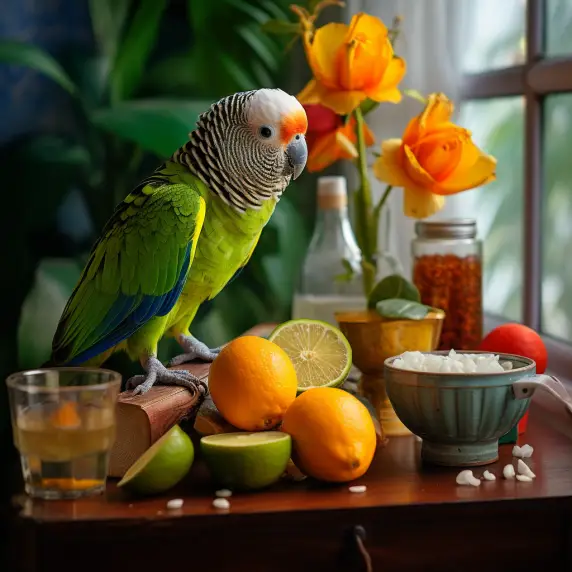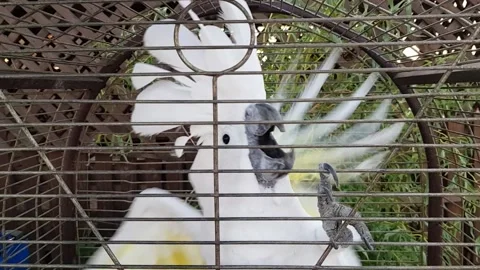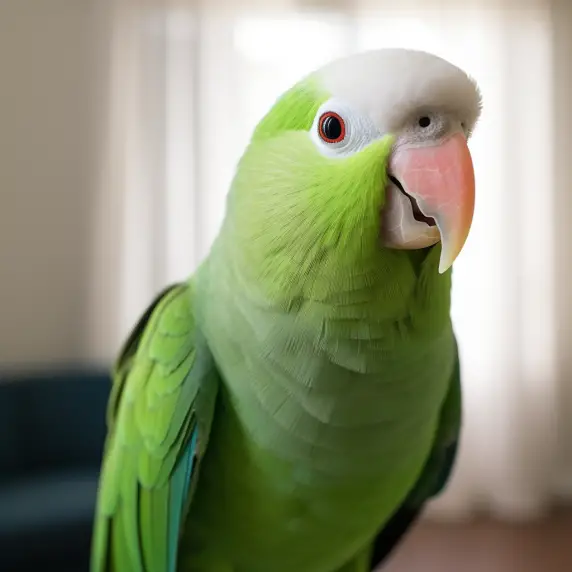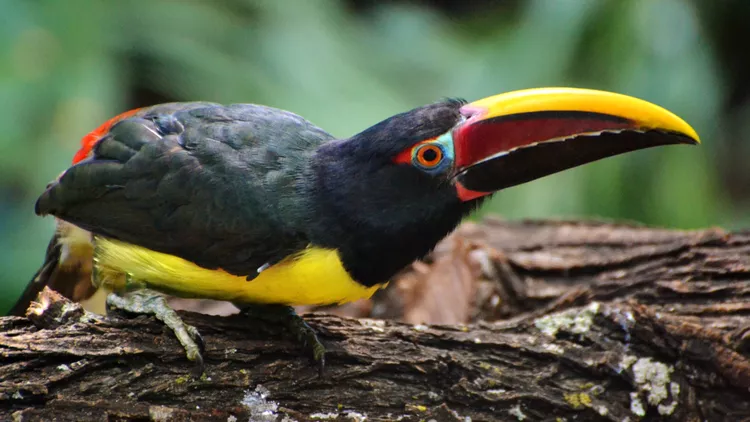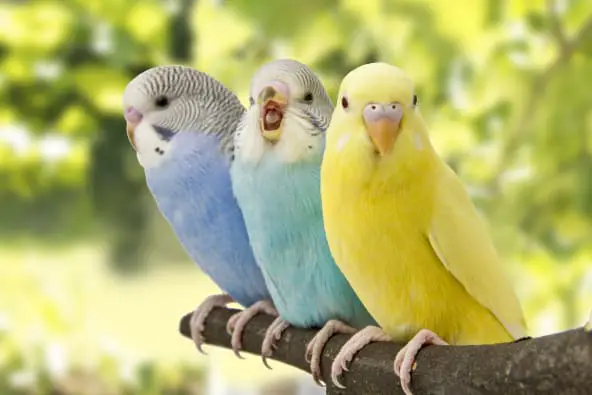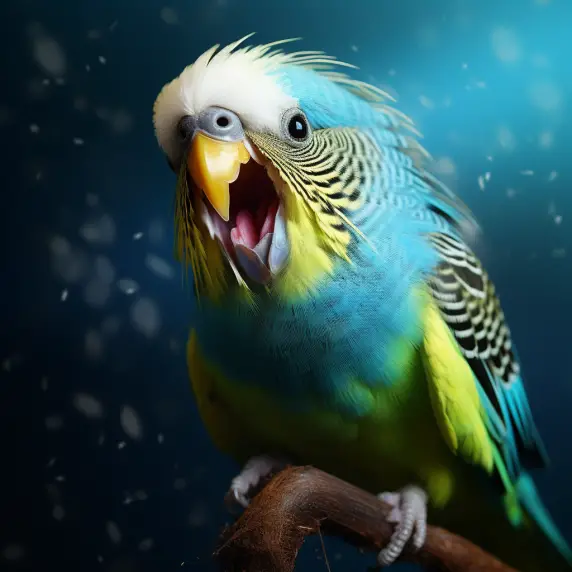6 Popular Parrot Species to Keep as Pets (With Pictures)
Parrots are a diverse and captivating group of birds, with over 400 species found worldwide. Known for their bright colors, intelligence, and ability to mimic human speech, they have been beloved pets for centuries.
This comprehensive guide will help you better understand the unique traits and needs of various parrot species and assist you in choosing the perfect companion for your home and lifestyle.
Key takeaways
Various parrot species suitable as pets, each with unique traits.
Budgerigars: small, playful, good at mimicking speech.
Cockatiels: distinctive crest, charming, long-lived.
Lovebirds: small, affectionate, thrive in pairs.
African Greys: highly intelligent, skilled mimickers.
Macaws: large, colorful, long lifespan, need ample space.
Eclectus Parrots: unique sexual dimorphism, calm, intelligent.
Cockatoos: friendly, sociable, need a lot of attention.
Balanced diet, appropriate cage size, stimulation, vet visits are necessary.
Choose a parrot aligning with your lifestyle and care capacity.
Overview of Parrot Species
Parrots belong to the order Psittaciformes, which is divided into three families: Psittacidae (true parrots), Cacatuidae (cockatoos), and Strigopidae (New Zealand parrots).
They can be found across the globe, from South America to Africa, Asia, and Australia, living in various habitats such as rainforests, savannas, and even mountainous regions.
Brief History of Parrots as Pets
Humans have kept parrots as pets for thousands of years, with evidence of parrots being traded as exotic pets in ancient Egypt, Greece, and Rome. Parrots’ popularity as pets surged during the Age of Exploration when European sailors brought them back from the New World.
Distribution and Habitat
While parrots are native to many different regions, the highest concentration of species can be found in Central and South America, followed by Africa and Australia. Parrots generally inhabit tropical and subtropical regions, although some species, like the Monk Parakeet, have adapted to living in temperate climates.
Popular Parrot Species as Pets
When it comes to selecting a parrot as a pet, it’s essential to research and understand each species’ unique traits and needs. Here are some of the most popular parrot species to keep as pets, along with an overview of their characteristics and care requirements:
1) Budgerigars (Budgies)
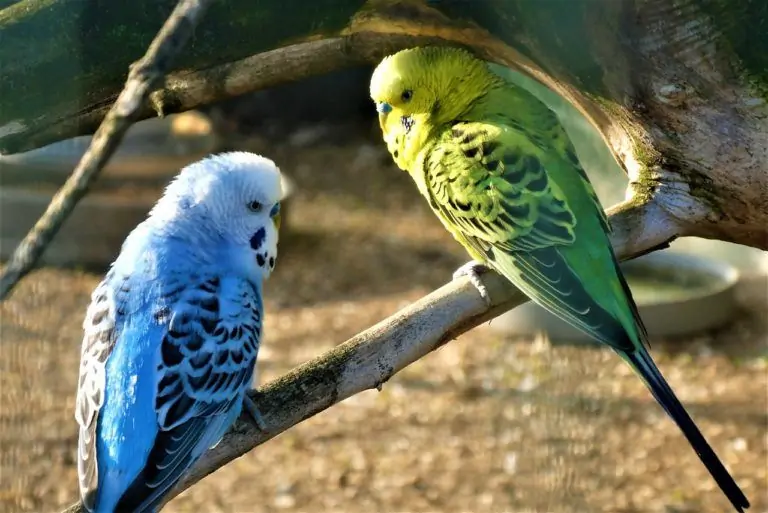
Budgies are small, colorful parrots native to Australia. They’re among the most popular pet birds worldwide, known for their playful and sociable nature.
Traits and Characteristics
- Size: 7-8 inches
- Lifespan: 5-15 years
- Color: Green, blue, yellow, and white, with various patterns
- Temperament: Friendly, social, and playful
Care and Maintenance
Budgies require a spacious cage with plenty of toys and perches for mental stimulation. They thrive on a balanced diet of pellets, seeds, fruits, and vegetables. Regular social interaction is vital for their emotional well-being.
2) Cockatiels
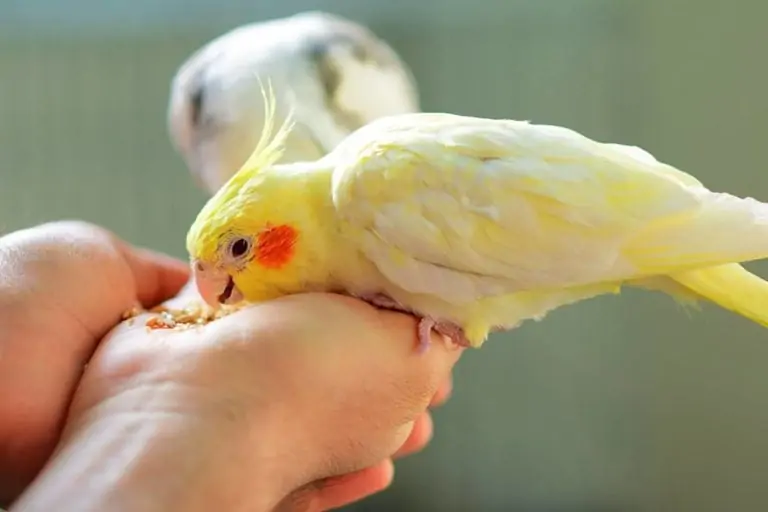
Cockatiels are native to Australia and known for their friendly and affectionate nature. They are an excellent choice for first-time parrot owners.
Traits and Characteristics
- Size: 12-14 inches
- Lifespan: 15-25 years
- Color: Gray with yellow or orange facial markings
- Temperament: Affectionate, gentle, and intelligent
Care and Maintenance
Cockatiels need a large cage with horizontal bars for climbing, as well as various toys and perches for enrichment. They thrive on a balanced diet of pellets, seeds, fruits, and vegetables. Social interaction is essential to keep them happy and healthy.
3) African Grey Parrots
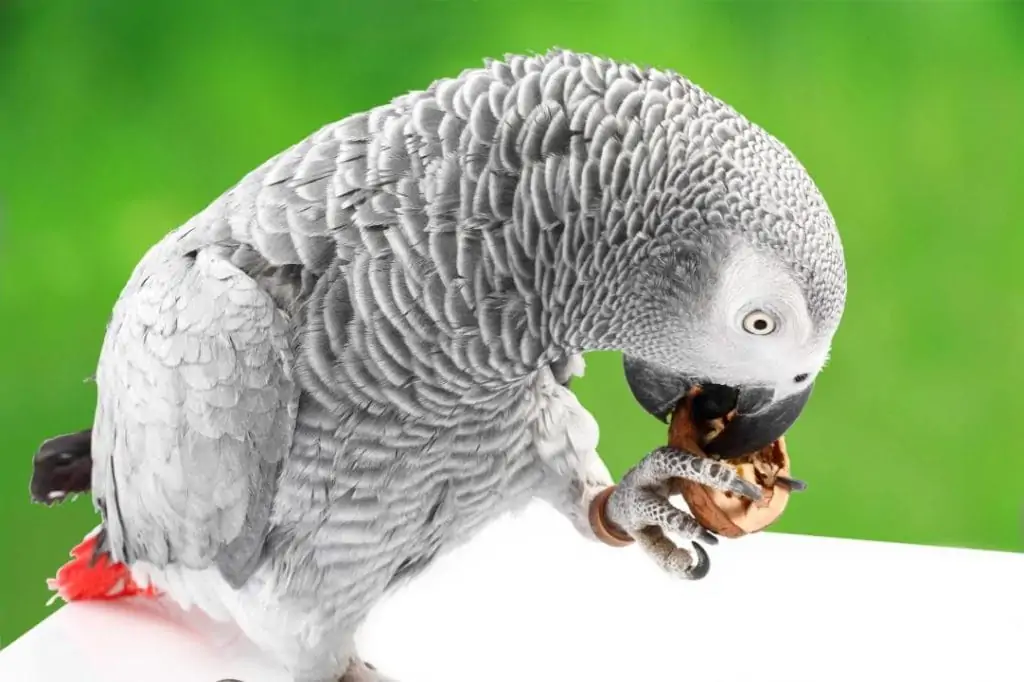
African Grey Parrots are renowned for their remarkable intelligence and ability to mimic speech. They’re native to the rainforests of West and Central Africa.
Traits and Characteristics
- Size: 12-14 inches
- Lifespan: 40-60 years
- Color: Gray with a red tail
- Temperament: Highly intelligent, sensitive, and capable of forming strong bonds with their owners
Care and Maintenance
African Grey Parrots require a spacious cage with a variety of toys and perches to encourage mental stimulation. They thrive on a diet rich in pellets, fruits, vegetables, and occasional nuts. Consistent social interaction and mental enrichment are crucial to prevent boredom and stress-related behaviors.
4) Amazon Parrots
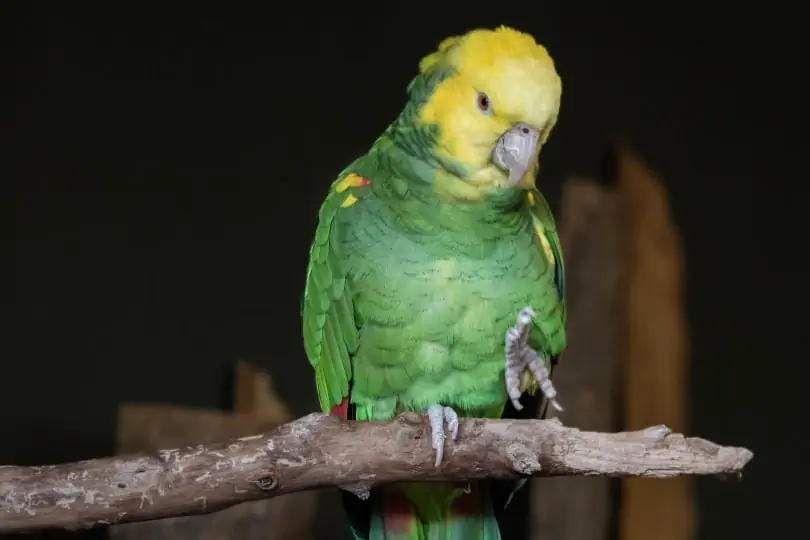
Amazon Parrots are native to Central and South America, with various species known for their lively personalities and vocal abilities.
Traits and Characteristics
- Size: 11-18 inches
- Lifespan: 40-70 years
- Color: Mainly green with varying markings depending on the species
- Temperament: Playful, vocal, and social
Care and Maintenance
Amazon Parrots need a spacious cage with ample opportunities for climbing, as well as a variety of toys and perches for mental stimulation. They benefit from a balanced diet of pellets, fruits, vegetables, and occasional nuts. Regular social interaction and mental enrichment are necessary to keep them happy and engaged.
5) Macaws
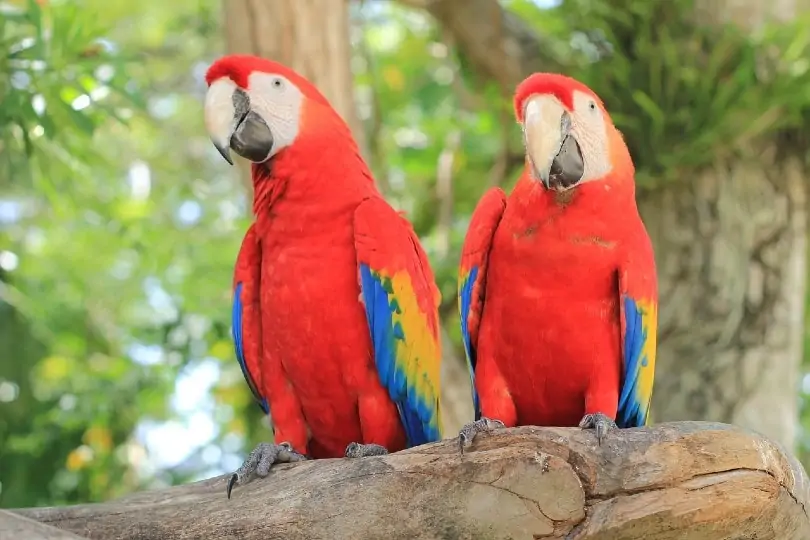
Macaws are large, colorful parrots native to Central and South America, known for their striking appearance and strong personalities.
Traits and Characteristics
- Size: 20-42 inches, depending on the species
- Lifespan: 30-80 years
- Color: Various bright colors, such as blue, red, yellow, and green
- Temperament: Intelligent, bold, and social
Care and Maintenance
Macaws require a very spacious cage to accommodate their large size and need for exercise. They thrive on a balanced diet of pellets, fruits, vegetables, and nuts. Consistent social interaction and mental stimulation are essential for their emotional well-being.
6) Lovebirds
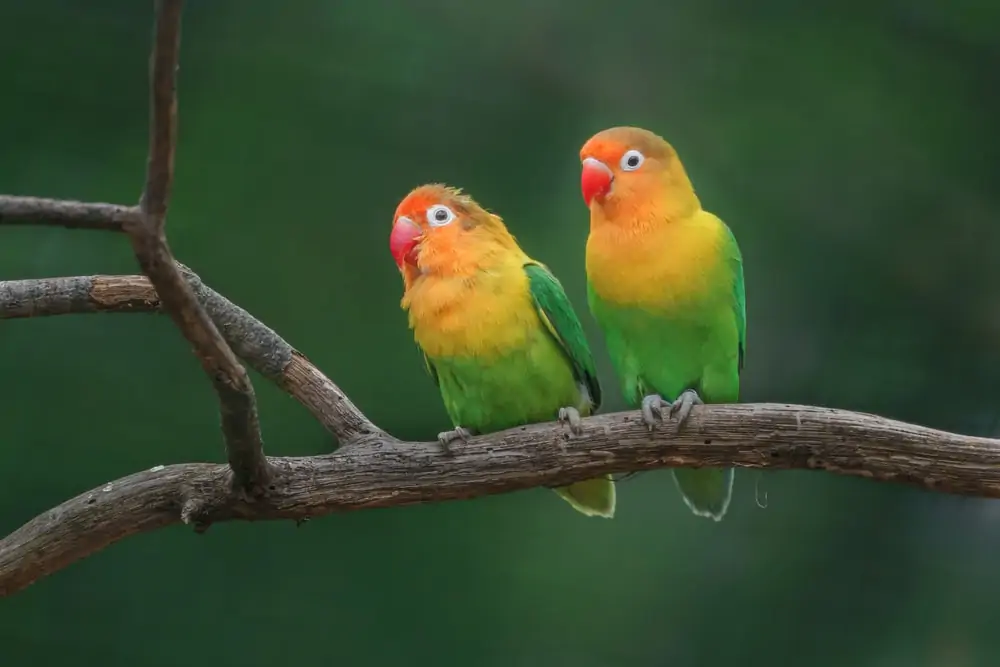
Lovebirds are small, colorful parrots native to Africa, known for their affectionate and monogamous nature.
Traits and Characteristics
- Size: 5-7 inches
- Lifespan: 10-15 years
- Color: Various combinations of green, yellow, blue, and orange, depending on the species
- Temperament: Affectionate, active, and social
Care and Maintenance
Lovebirds need a moderately-sized cage with plenty of toys and perches for mental stimulation. They thrive on a balanced diet of pellets, seeds, fruits, and vegetables. Social interaction is essential to keep them happy and healthy, as they are known for forming strong bonds with their owners or another lovebird.
Diet and Nutrition
Providing a proper diet is crucial for your parrot’s health and well-being. Here are some tips on providing a balanced diet for your feathered friend:
Essential Nutrients for Parrots
Parrots require a variety of nutrients, including proteins, carbohydrates, fats, vitamins, and minerals. These can be provided through a combination of pellets, seeds, fruits, and vegetables.
Common Food Items
- Pellets: High-quality, formulated pellets should make up the majority of your parrot’s diet.
- Seeds: Offer a small portion of seeds as a treat, as they can be high in fat.
- Fruits: Apples, bananas, berries, and melons can be offered in moderation.
- Vegetables: Dark leafy greens, carrots, broccoli, and bell peppers are nutrient-dense options.
Foods to Avoid
Some foods can be toxic or harmful to parrots. These include avocado, chocolate, caffeine, alcohol, and foods high in salt or sugar. Also, avoid giving your parrot fruit pits or seeds, as some can be toxic.
Social Interaction and Enrichment
Parrots are intelligent, social creatures that require mental stimulation and regular interaction with their owners to thrive. Here are some ways to provide the necessary socialization and enrichment for your parrot:
Importance of Socializing
Establishing a strong bond with your parrot and providing daily social interaction is crucial for their emotional well-being. Fostering trust and companionship will help prevent behavioral issues and create a positive, enriching environment for your pet.
Mental Stimulation and Enrichment
Providing a variety of toys, perches, and puzzles can help keep your parrot mentally engaged and prevent boredom. Regularly rotate toys to maintain interest and challenge their problem-solving abilities.
Training and Bonding with Your Parrot
Positive reinforcement training is an excellent way to strengthen the bond with your parrot and teach them new skills. This can include basic commands, trick training, or even teaching them to talk.
Health and Medical Care
To ensure your parrot remains healthy and happy, it’s essential to be aware of common health issues and provide regular veterinary care.
Common Health Issues in Parrots
Some common health issues in parrots include feather plucking, respiratory infections, and digestive problems. Keep an eye out for any changes in behavior, appetite, or appearance that may indicate a potential health concern.
Veterinary Care
Regular veterinary check-ups are necessary for your parrot’s health. Ensure that your parrot is seen by an avian specialist who is knowledgeable about their specific needs and care requirements.
Signs of Illness
If you notice any of the following symptoms in your parrot, contact your veterinarian immediately:
- Lethargy or decreased activity
- Loss of appetite
- Fluffed feathers or changes in feather condition
- Unusual vocalizations or changes in vocal patterns
- Changes in droppings
Choosing the Right Parrot for You
Before bringing a parrot into your home, it’s essential to carefully consider your lifestyle, available space, and long-term commitment to their care.
Assessing Your Lifestyle
Consider factors such as your work schedule, noise tolerance, and available time for socializing and caring for your parrot. Some parrot species require more time and attention than others, so choose a species that suits your lifestyle and personal preferences.
Space and Housing Considerations
Parrots require spacious cages to accommodate their size and exercise needs. Ensure that you have enough room in your home to provide an appropriately-sized cage, along with additional space for toys and perches.
Cost and Commitment
Owning a parrot can be a long-term commitment, with some species living 50 years or more. Be prepared to invest in quality food, veterinary care, and toys throughout your parrot’s life. Additionally, consider the initial cost of the parrot, the cage, and other necessary supplies.
Adoption and Responsible Breeding
When adding a parrot to your family, consider adopting from a reputable rescue organization or purchasing from a responsible breeder. This will help ensure that you’re providing a loving home for a bird in need and discouraging unethical breeding practices.
Frequently Asked Questions
Can I keep different parrot species together in the same cage?
Generally, it is not recommended to house different parrot species together in the same cage, as their varying temperaments, sizes, and social needs can lead to conflicts and stress. However, some small parrot species may get along if provided with ample space and monitored closely.
What kind of cage is best for my parrot?
The ideal cage for your parrot depends on their size, activity level, and climbing needs. It should be spacious, with enough room for the parrot to fully spread its wings and move around comfortably. Look for a cage with horizontal bars for climbing, a secure door, and a removable tray for easy cleaning.
Can parrots be left alone during the day?
Parrots can be left alone for short periods, but they require daily social interaction and mental stimulation to maintain their emotional well-being. If you work long hours, consider getting a companion bird or setting up a routine to provide your parrot with the attention they need when you’re home.
How can I tell if my parrot is happy and healthy?
Ahappy and healthy parrot will display a range of behaviors, such as vocalizing, preening, playing with toys, and interacting with their owners. Look for bright, clear eyes, smooth and well-groomed feathers, and normal eating and drinking habits as indicators of good health.
Monitor your parrot’s behavior and appearance regularly to detect any changes that may signal a problem.
Can parrots be potty trained?
With patience and positive reinforcement, many parrots can be potty trained to a certain extent. Establish a designated spot in the cage or on a stand and use verbal cues, praise, and treats to encourage your parrot to do their business in the specified area.
Keep in mind that success will vary depending on the individual parrot’s personality and willingness to cooperate.
Is it possible to teach an older parrot new tricks or behaviors?
Yes, it is possible to teach an older parrot new tricks or behaviors with patience and positive reinforcement training. Parrots are highly intelligent, and their learning capacity is not limited by age.
However, be prepared to invest more time and effort into training an older parrot, as they may have established habits and behaviors that require modification.
How can I encourage my parrot to talk?
While not all parrots will learn to talk, you can increase the likelihood by following a few tips:
- Choose a talkative species: Some parrot species are more inclined to mimic speech, such as African Greys, Amazon Parrots, and Budgies.
- Start early: Younger parrots are generally more receptive to learning new sounds and words.
- Speak clearly and consistently: Repeat words and phrases to your parrot regularly, using a clear and consistent tone.
- Use positive reinforcement: Reward your parrot with praise, attention, or treats when they successfully mimic a word or phrase.
- Be patient: Remember that learning to talk takes time, and some parrots may take longer than others to start speaking.
How can I help my parrot become more comfortable with handling and touch?
To help your parrot become more comfortable with handling and touch, follow these steps:
- Establish trust: Build a bond with your parrot through regular interaction, communication, and positive reinforcement.
- Start slowly: Begin by gradually introducing your hand into the cage and allowing your parrot to become familiar with its presence.
- Use positive reinforcement: Reward your parrot with praise, attention, or treats for accepting your hand or touch without fear.
- Progress gradually: Gradually increase the level of handling, always respecting your parrot’s boundaries and comfort level.
- Be patient and consistent: Helping your parrot become comfortable with handling can take time, so be patient and maintain a consistent routine.
Do parrots need to bathe?
Yes, parrots need to bathe to maintain healthy skin and feathers. Bathing can be done in various ways, such as providing a shallow dish of water, misting your parrot with a spray bottle, or allowing them to shower with you.
Observe your parrot’s preferences and try to accommodate their preferred method of bathing. Make sure to provide regular opportunities for bathing and monitor the cleanliness of their feathers.
Final Thoughts
Parrots can make extraordinary companions for the right person or family. By understanding the unique traits and needs of each species and considering your personal preferences and lifestyle, you can make an informed decision and create a loving, nurturing environment for your new feathered friend.

